If you see thyme in the photo, you will recognize it in the meadow
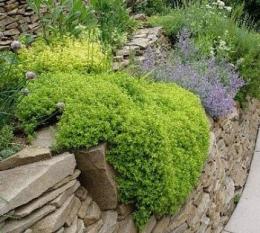
Thyme or thymus, thyme, as well as Bogorodsk grass (lat. Thýmus) - a plant that has been known for a very long time. History knows many ways of its purpose: as a spice, a remedy, and even for magical rituals. Thyme is now actively used in both folk and traditional medicine. You can buy it in dried form at a pharmacy, but it’s better to take a walk through a pine forest or clearing and pick it up. Remember what thyme looks like in the photo, and you will easily find the plant.
Content:
- Brief description of species
- Medicinal qualities of thyme
- Thyme: contraindications
- Thyme: recipes
- Reproduction
- Growing conditions
Brief description of species
The plant may look like ordinary flowers or a subshrub (thyme in the photo). Branches, flowers and seeds are harvested for culinary or medicinal use. They are dried and stored in dry rooms for no more than two years. Fresh thyme leaves are used to treat skin wounds, swelling. Most often, infusions are prepared from dried thyme (1 tablespoon per glass of water) and added to food as a seasoning. Thyme seeds can be planted on your site; it is not difficult to grow at home.

Common types:
- Creeping thyme (Thymus serpyllum)
- Flea thyme (Thymus pulegioides)
- Lemon-smelling thyme (Thymus citriodorus)
- Early thyme (Thymus praecox)
- Siberian thyme (Thymus sibiricus)
- Japanese thyme (Thymus japonicus)
- Common thyme (Thymus vulgaris)
Medicinal qualities of thyme
- The plant has antiseptic, bactericidal properties and promotes wound healing.
- Thyme is indispensable in the treatment of respiratory diseases: bronchitis, cough, pneumonia, whooping cough and even tuberculosis.
- Thyme can be called a man's best friend, as it contains zinc, which has a positive effect on sexual function and prevents prostatitis.
- Thyme perfectly stimulates the secretion of digestion; dried leaves of the plant are used for all kinds of infusions, and teas are brewed.
- Thyme powder is used externally. Various dressings are made from the powder. Used properties of thyme to reduce pain syndromes with radiculitis. When adding powder to ointments, rub joints for rheumatism, rub the peri-lumbar region for inflammation of the sciatic nerve.
- A bath with thyme has a calming effect on the nervous system, helps with various skin damage and metabolic disorders.
- The presence of thyme in the bedroom promotes healthy sleep and treats insomnia.
Thyme: contraindications
Failure to comply with the dosage of thyme or its unsystematic, excessive use can affect the function of some glands (liver, kidneys, thyroid, stomach). These organs are affected by the preservative thymol, which is part of the Bogorodskaya herb.
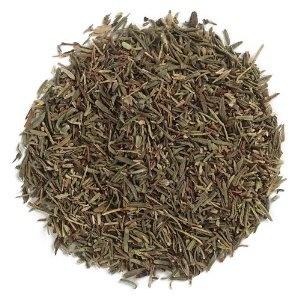
Moderately affects the performance of blood vessels. Therefore, if you have severe heart problems, be careful, monitor your condition, and consult with your doctor.
Thyme: recipes
Inhalation and tinctures for the lungs
- Dried raw thyme is used. Place no more than 1 tbsp in boiling water. spoons of powder. Leave in a thermos for two hours.
- Drink 1 tbsp after meals. spoon.
- It is recommended to use the infusion to inhale water vapor under a towel.
Tea against dysbiosis, stimulating digestion
- A pinch of powder or fresh sprigs of Bogorodsk grass is added to the green tea brew. For immunity, you can sprinkle a handful of rose hips.
- Drink throughout the day.
The fragrant properties of thyme are used in aromatherapy. They calm, reduce fatigue and distraction.
Reproduction
Thyme is easy to propagate cuttings. It is enough to pinch off a small twig and dig it into several nodes. Creeping varieties take root on their own when they come into contact with the soil, so plant clumps can be divided quite often throughout the spring and summer. It is not advisable to divide thyme in late autumn.
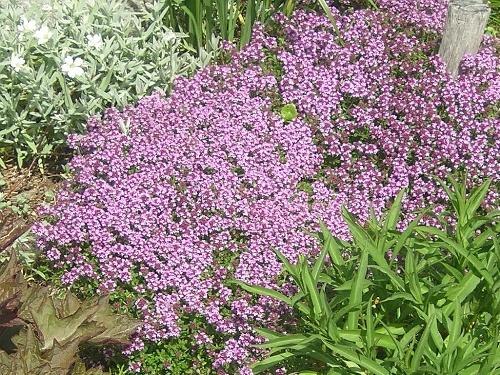
Thyme seeds are sown in greenhouses and seedlings in March-April. In open ground, it is difficult to monitor the germination of seeds, since the seeds and seedlings are very small, and weeds will drown them out.
Growing conditions
Thyme does not tolerate acid reaction; it needs light, permeable soils. In the shade, the shoots become thinner and the plant gradually falls out. The plant needs open spaces without stagnant water. Frost-resistant. In gardens, thyme is usually planted near passages. As you pass by, you involuntarily touch the plant with your feet, and the whole area is filled with a wonderful, pleasant smell.
Thyme is very beautiful, healthy and aromatic plant. In Ancient Greece, it was used for temple incense, hence the term “incense.” In Ancient Rus', on the church holiday of the Dormition of the Virgin Mary, it was used to decorate icons, which is why its name “Bogorodskaya grass” appeared. If you haven’t had a chance to get acquainted with this plant yet, it’s time to do so - you definitely won’t regret it.

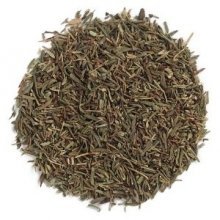
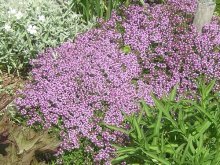

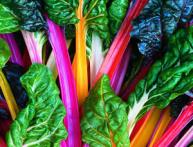
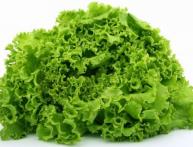
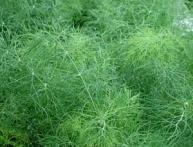
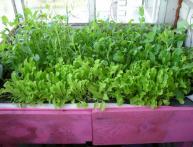
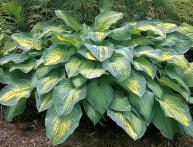
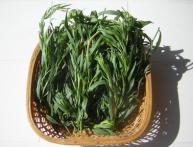

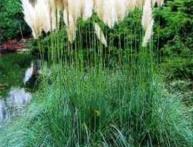
Comments
I didn't know that thyme and thyme are the same thing. It turns out that you can meet him in any clearing, just like that you will pass and not notice! And you can even grow it in your garden. There are many beneficial properties, although I approach medicinal plants with caution, they should not be used immoderately, so as not to cause harm instead of benefit.
And we have thyme growing right next to our dacha. My mother dries it and in winter adds a little to ordinary tea when brewing. But now I’ve read the contraindications and am a little wary!..
And we have thyme growing right next to our dacha. My mother dries it and in winter adds a little to ordinary tea when brewing. But now I’ve read the contraindications and am a little wary!..
It will be more difficult to find a clearing in our metropolis). We have been growing thyme in our dacha for quite some time. Mainly as a decoration for a summer cottage, but don’t forget to dry it for the winter to use in herbal preparations.
I used thyme for my baby, when he was 6 months old, for no apparent reason he became so restless, and on the advice of a neurologist, I began to add an infusion of thyme during evening bathing, for a month we bathed in this way, and that’s it - cheerful, calm again child!
thyme has saved me more than once. I want to share my applied medicine. After the birth of my son, when I arrived home from the maternity hospital, on the second day my temperature was 40. Mastitis. Nursing mother. It is impossible to bring down the temperature with medication. But you need to knock it down urgently, otherwise the milk will “burn.” There was thyme tincture at home. They applied the moistened wipes to the wrists and feet. Changing and wetting the wipes frequently. Another napkin on the forehead. They rubbed me all over with thyme tincture. After 3-4 hours the temperature dropped. And she didn’t get up again.
In the morning the temperature is 36.6. But the forehead turned black)). It was necessary to dilute the tincture with water.
Later, when my son’s temperature rose. I only removed it with thyme. But I definitely diluted it with water.